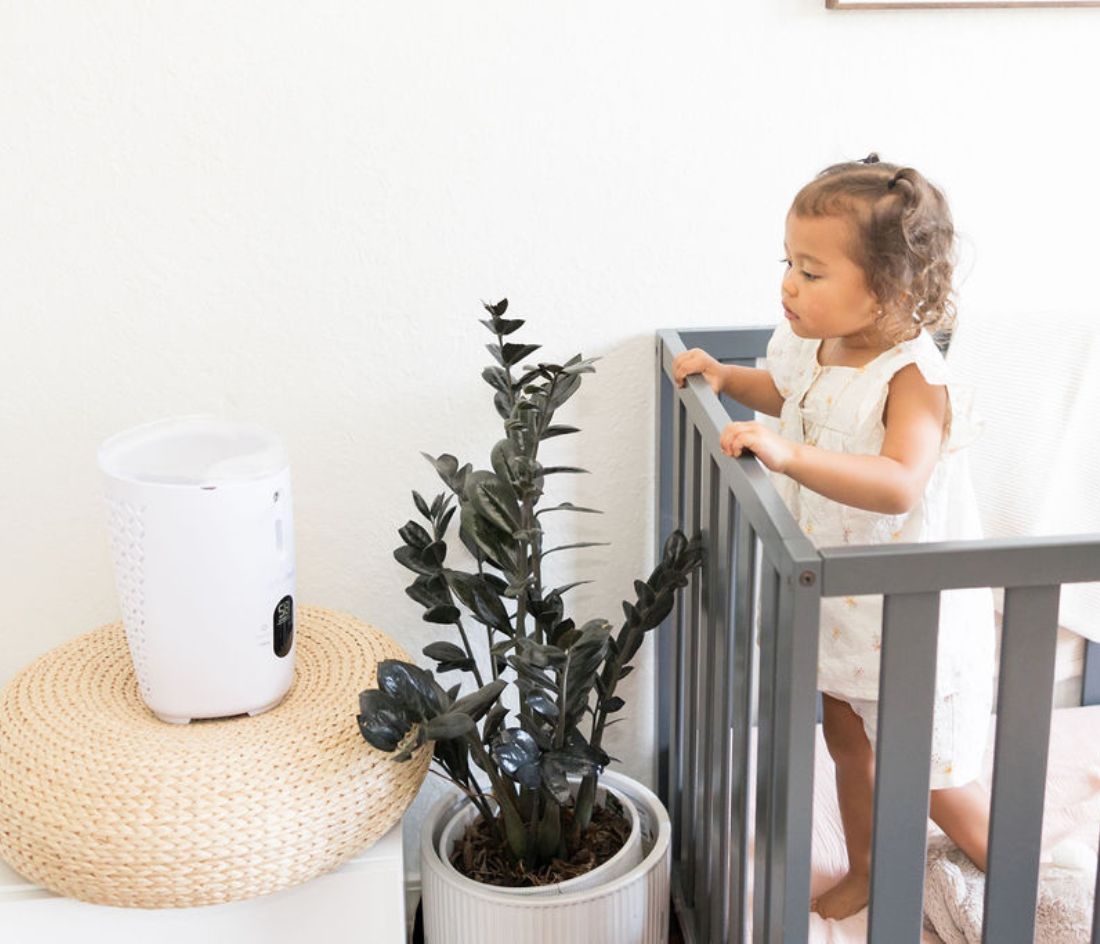Guest post by Holly Sanford, RN
Thanks for joining us for our newborn baby breathing series! If you missed it, last month we covered what parents need to know about breath-holding spells!
Have you ever noticed a high-pitched noise coming from your baby or small child whenever they breathe? It could be something as common as Laryngomalacia. Today, were sharing everything that parents need to know about getting a diagnoses and treatment.
What is Laryngomalacia?

Laryngomalacia is a common congenital condition (present at birth) where floppy tissue above the voice box falls into the airway as the child breathes making a high-pitched noise (stridor). When the rigid structures of the voice box, or larynx, do not fully develop in utero (in the womb), laryngomalacia may occur. As a result, noisy, high pitched breathing sounds upon inspiration called stridor may be observed in the infant along with other symptoms shortly after birth. Stridor due to laryngomalacia will often get better over time as children outgrow the floppiness and totally resolve before 18 months of age.
The cause of the laryngomalacia is unknown although it sometimes presents alongside other birth differences. If you have concerns about the noises that your baby is making, you need to talk to your physician! It is helpful to take a video recording of your baby’s noisy breathing so your doctor can hear it (although it should be short!). If your baby is struggling to breathe you need to call your doctor right away, go to the ER, or call 911 if you think there is something wrong. To make the diagnosis of laryngomalacia an ENT doctor will need to place a scope in your child’s nose/throat to directly look at the voice box.
Does my child have larngomalacia?
The following symptoms may be observed with larygnomalcia:
- Noisy breathing- high pitched noise on breathing in (stridor)
- Apnea (stopping breathing)
- Blue spells (blue coloration of lips)
- Retractions (pulling of neck and chest skin when breathing)
- Gastroesophageal reflex disease (spitting up)
- Choking while feeding or eating solid foods or sounding congested after eating. Feeding your baby should take less than 30 minutes, if it is taking longer you need to discuss with your physician.
- Poor weight gain

Types of Laryngomalacia
There are three different types of Laryngomalacia:
Mild larynogomalacia
Typically children in this category will experience mild symptoms that do not need intervention. Most children will outgrow symptoms in a short period of time and progress to normal breathing and eating patterns. It is still important to monitor little ones to ensure their symptoms do not worsen, particularly when sick. Things that your pediatrician may watch are weekly weights and time for feeding.
Moderate laryngomalacia
Children with moderate laryngomalacia have noticeable stridor (people will come up to you in the store and ask about it!) upon inspiration. Other symptoms such as feeding difficulties, gastroesophageal reflux disease (GERD), vomiting and complicated airway issues create challenges for the child. Your physician may ask you to be seen on a weekly basis to check your baby’s weight.
Severe laryngomalacia
Little ones with severe laryngomalacia will present with concerning breathing events such as blue spells, apnea, oxygen needs and/or failure to thrive (your baby isn’t able to gain weight) from difficulty feeding. Surgery is often required for the severe diagnoses of laryngomalacia.
Treatment for Laryngomalacia

Most children with laryngomalacia will not need treatment and the disorder will resolve on its own. However, medications can be helpful in managing some symptoms, such as those seen with GERD. Children with the most concerning breathing issues often require surgery a called supraglottoplasty. This is a procedure where an ENT surgeon (like Dr. Goudy!) will use a scope to look through your baby’s mouth to remove the excess tissue at the top of the voice box to alleviate the obstruction of your child’s breathing.
After surgery your team may ask a speech pathologist to watch your baby feed after surgery to ensure they are not aspirating (getting food down the wrong tube). Children typically progress to eating and breathing normally after a supraglottoplasty, although some may benefit from ongoing multidisciplinary medical care where you may see an ENT, GI, Pulmonary, and Speech pathologist.
Consult with your provider if you are worried that your little one may have symptoms of laryngomalacia. If you are concerned about blue spells, choking or long periods of apnea seek medical attention immediately.
Holly Sanford is a mother and a pediatric nurse of 9 years with a lifelong passion for helping children and their families. In her free time, she loves cooking new recipes, traveling to unique places and staying active with her family.
Life is just easier with the NozeBot.



